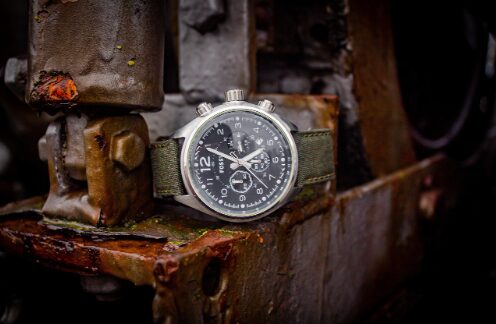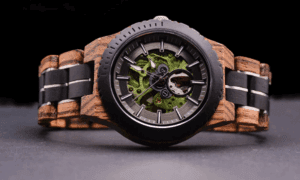Selecting the right watch has never been more complex—or more exciting. With countless styles, movements, and features available today, finding a timepiece that perfectly complements your lifestyle requires understanding both your personal needs and the diverse world of horology. Whether you’re seeking your first quality watch or expanding an existing collection, this comprehensive guide will help you navigate the essential considerations for making an informed decision.
Understanding Your Lifestyle Needs
Before diving into specific watch types, it’s crucial to honestly assess your daily activities and long-term goals. A corporate executive’s requirements differ vastly from those of an outdoor enthusiast or creative professional. Consider your typical day: Do you spend most of your time in meetings, working with your hands, exercising, or traveling? Your watch should enhance rather than complicate your routine.
Professional environments often call for understated elegance, while active lifestyles demand durability and functionality. If you frequently switch between casual and formal settings, versatility becomes paramount. Think about occasions when you’ll want to make a statement versus times when discretion is preferred.
Essential Watch Categories to Consider
Dress Watches: Timeless Sophistication
Dress watches represent the epitome of horological refinement. These slim, elegant timepieces typically feature clean dial designs, leather straps, and minimal complications. Perfect for formal occasions and professional settings, dress watches prioritize aesthetics and tradition over robust functionality.
The beauty of dress watches lies in their restraint. A well-chosen piece can seamlessly transition from boardroom presentations to evening events, making it an invaluable addition to any wardrobe. Consider classic designs with white or black dials, gold or steel cases, and simple hour markers for maximum versatility.
Sports Watches: Built for Performance
Sports watches cater to active individuals who need timepieces capable of withstanding demanding conditions. These robust instruments often feature water resistance, shock protection, chronograph functions, and durable materials like stainless steel or ceramic.
From diving watches rated for underwater exploration to chronographs designed for racing enthusiasts, sports watches merge functionality with style. Many modern sports watches offer sophisticated complications while maintaining the ruggedness required for adventure activities.
Smart Watches: Technology Meets Tradition
The digital revolution has transformed watchmaking, introducing smart watches that blend traditional timekeeping with cutting-edge technology. These devices offer fitness tracking, communication capabilities, and customizable interfaces while maintaining the fundamental appeal of wrist-worn timepieces.
While purists may debate their place in horology, smart watches undeniably serve modern lifestyle needs. They’re particularly valuable for individuals who prioritize connectivity, health monitoring, and technological integration in their daily routines.
Movement Types: The Heart of Your Watch
Understanding watch movements helps you make informed decisions about reliability, maintenance, and long-term satisfaction. Each movement type offers distinct advantages depending on your priorities and preferences.
Mechanical Movements: Traditional Craftsmanship
Mechanical watches represent centuries of horological tradition, powered entirely by springs and gears without electronic components. These movements require regular winding but offer the satisfaction of owning a purely mechanical marvel. Many enthusiasts appreciate the craftsmanship and heritage associated with mechanical timepieces.
For serious collectors, mechanical watches often hold their value better than electronic alternatives. However, if you own multiple mechanical timepieces, investing in the best watch winder becomes essential to maintain optimal performance and prevent lubricant settling when watches aren’t worn regularly.
Automatic Movements: Convenience Meets Tradition
Automatic movements combine mechanical craftsmanship with practical convenience. These self-winding mechanisms harness energy from your wrist movements, eliminating the need for daily winding while preserving traditional horological appeal.
Automatic watches represent an excellent compromise for those who appreciate mechanical engineering but prefer hassle-free ownership. They’re particularly suitable for daily wear, as regular movement keeps them running smoothly.
Quartz Movements: Precision and Reliability
Quartz movements revolutionized watchmaking by offering unprecedented accuracy and minimal maintenance requirements. Battery-powered and electronically regulated, these movements provide reliable timekeeping with minimal ongoing care.
While some traditionalists prefer mechanical alternatives, quartz movements excel in practical applications where accuracy and convenience matter most. They’re particularly valuable for sports timing, professional requirements, and situations where precise timekeeping is critical.
Size and Fit Considerations
Proper sizing ensures both comfort and aesthetic appeal. Watch cases range from petite 28mm options to oversized 50mm+ statement pieces, with most falling between 38mm and 42mm for optimal versatility.
Your wrist size significantly influences appropriate case dimensions. Smaller wrists typically look best with cases between 36mm and 40mm, while larger wrists can accommodate bigger timepieces without appearing disproportionate. However, personal preference ultimately trumps traditional guidelines.
Consider lug-to-lug measurements alongside case diameter, as this dimension affects how the watch sits on your wrist. A watch with long lugs may feel uncomfortable even if the case diameter seems appropriate.
Breaking Gender Boundaries in Watch Selection
Modern watch enthusiasts increasingly reject traditional gender categorizations, recognizing that great design transcends arbitrary boundaries. The trend toward unisex sizing and styling reflects evolving attitudes about personal expression and individual taste.
Many collectors now explore pieces originally designed for different demographics, discovering exceptional timepieces that perfectly suit their preferences regardless of marketing labels. This approach opens up exciting possibilities, from delicate vintage pieces to bold contemporary designs. For those curious about expanding their horizons, exploring Women’s Watches can reveal surprising options that challenge conventional wisdom about appropriate sizing and styling.
Budget Planning and Value Considerations
Establishing a realistic budget prevents impulse purchases while ensuring you receive maximum value for your investment. Quality watches span an enormous price range, from reliable entry-level options under $200 to exclusive luxury pieces costing tens of thousands.
Consider your budget in the context of intended use and long-term goals. A well-chosen mid-range watch often provides better satisfaction than stretching finances for a prestigious brand that limits other priorities. Focus on quality construction, reliable movements, and designs that will remain appealing over time.
Remember that the most expensive watch isn’t always the best choice for your specific needs. Sometimes a modestly priced timepiece with perfect functionality and appealing design offers superior value compared to prestigious alternatives that exceed your practical requirements.
Maintenance and Long-term Ownership
Every quality watch requires periodic maintenance to ensure optimal performance and longevity. Understanding maintenance requirements helps you budget appropriately and maintain your timepiece’s condition over decades of ownership.
Mechanical and automatic watches typically require professional servicing every 3-5 years, involving complete movement disassembly, cleaning, and reassembly. This process, while expensive, preserves your investment and ensures continued reliability.
Quartz watches require less frequent servicing but benefit from periodic gasket replacement and case refinishing. Battery replacement every 2-3 years represents the primary ongoing expense for most quartz timepieces.
Making Your Final Decision
Choosing the perfect watch ultimately comes down to balancing practical needs with personal preferences and budget constraints. The best timepiece for you seamlessly integrates into your lifestyle while providing years of satisfaction and reliable service.
Don’t rush this decision. Take time to research different options, try on various styles, and consider how each candidate aligns with your long-term goals. A thoughtfully chosen watch becomes more than an accessory—it becomes a trusted companion that marks important moments and reflects your personal journey.
Remember that there’s no universally “perfect” watch, only the perfect watch for your unique circumstances. By understanding your needs, preferences, and constraints, you’ll confidently select a timepiece that enhances your daily experience while providing lasting value and enjoyment.
The world of watches offers endless possibilities for exploration and discovery. Whether you choose a classic dress watch, robust sports timepiece, or cutting-edge smart watch, the right selection will serve you faithfully while reflecting your individual style and values. Take your time, trust your instincts, and enjoy the process of finding your perfect horological companion.



































